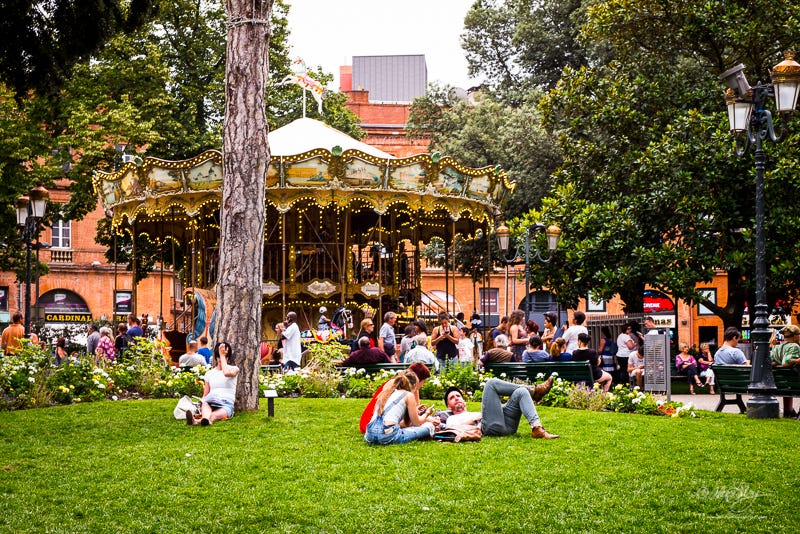Toulouse Limoges 2016
Toulouse & Limoges
We took a sharp right turn out of Provence and headed north to Toulouse for three days, the capital of the Occitania region. Paris, our final destination, lay beyond stops in Nantes, Saint Malo and Caen. Interesting note about Toulouse, metro stops are announced in French and Occitan!
Even though France has no dreaded ZTL equivalent, we booked a place for our rent car. We arrived mid-afternoon to our AirBnB which turned out to be a wonderful apartment with weird interior doors. Four rooms with doors that opened outward into a small entry way created a confusing head banging maze. It had a balcony overlooking a green area, secure parking garage and was described as close to the metro. Turned out that meant the metro was five minutes by car with no place to park once we got there. We ended up walking.
Toulouse has unique architecture made of pinkish terra cotta bricks, which earned it the nickname la Ville Rose (the Pink City). Toulouse is alive with parks, museums creatively housed in reimagined spaces, and one of the most beautiful city halls imaginable. The city's fabulous modern art museum, Les Abattiors, was a former slaughterhouse. We also saw a Helen Levitt photo exhibit in a 19th-century water tower. Toulouse counts two UNESCO World Heritage sites: the Canal des Deux Mers and the Basilica of St. Sernrin. Built around 1080, the Basilica is largest remaining Romanesque building in Europe and it's on the Santiago de Compostela pilgrimage route. Toulouse: Vibrant community full of art.
Sernin is a saint because he was martyred in 257. He was the Christian Bishop of Toulouse. The local pagans thought he was preventing their gods from speaking to them. They soon got fed up with silent gods so grabbed him one day as he was passing their temple. They tied him by his feet to a bull and then beat the bull creating a brutal tug of war. Bull one, Sernin saint. Nevertheless, bull fighting and running are still flourishing in the Languedoc region.

While the Basilica was yet another extraordinary beautiful old church the canal was boring. Wide paved ditch. Its construction and use are fascinating though. The Canal des Deux Mers (Canal of The two Seas) joins the Atlantic to the Mediterranean. It runs from the city of Toulouse on The Garonne River, to another river close to the Mediterranean. Basically Bordeaux to Marseilles. Begun in 1666 and completed in 1681 under Louis V!X, it is considered to be one of the greatest engineering feats of its time. It saved French maritime trade from Spanish galleons and pesky Portuguese privateers.
Our next planned destination, Nantes, was too far to be reached from Toulouse without driving at night which we were loath do to. Another never been, if not now when situation. Get the dart -- hit Limoges. Limoges is known for its medieval and Renaissance enamels on copper, for its 19th-century porcelain and for its oak barrels which are used for Cognac and Bordeaux wine. Some are even exported to wineries in California. Again outskirts with parking privileges. Note: Dart throws pay! Our place was wonderful. The bus stop to old city five minutes away by car had parking. We went to town and found a very interesting outdoor sculpture exhibit by Marc Petit. Around nine, after a wonderful meal at traditional restaurant in the old city, we walked back to where the bus dropped us off. We waited for about thirty minutes before we thought to check the posted schedule. Buses in Limoges stop running at eight! Fortunately Limoges has taxi service. Must have been very busy or not that many since one came about forty minutes later. After witnessing his approach to pick us up, we gave an extra tug to our seat belts.
Next up: Nantes - St Malo
VIEW PHOTOGRAPHS

